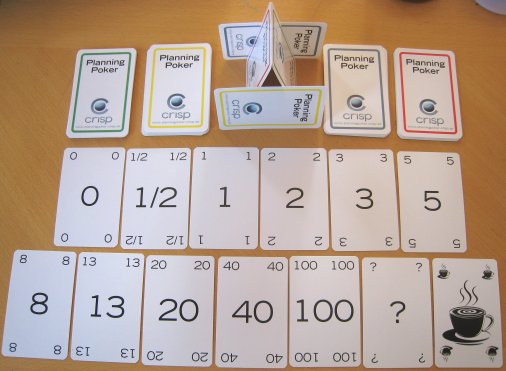Agile project management
- Introduction to Agile Project Management
- Agile Mindset and Agile Manifesto
- Agile Leadership
- Agile Methodologies and Frameworks
- Building an Agile Team
- Agile Planning and Estimation
- Executing Agile Projects
- Agile Quality Assurance
- Value-Driven Development
- Agile Contracting and Governance
- Agile Transformation and Scaling
- Case Studies and Best Practices
Agile Planning and Estimation
Agile Estimation Techniques: A Comprehensive Guide

Technique for estimating.
Agile estimation is a crucial aspect of Agile project management. It helps teams predict the amount of work they can complete in a given time frame, which is essential for effective planning and scheduling. In this article, we will explore various Agile estimation techniques and understand their pros and cons.
Planning Poker
Planning Poker, also known as Scrum Poker, is one of the most popular Agile estimation techniques. It was first defined by James Grenning in 2002 and later popularized by Mike Cohn.
In Planning Poker, each team member is given a set of cards with numbers that follow a sequence (usually a Fibonacci sequence: 0, 1, 2, 3, 5, 8, 13, 21, and so on). For each user story or task, team members independently select a card that represents their estimate of the effort required. All cards are then revealed simultaneously. If there's a significant difference in estimates, the team discusses the reasons behind their choices and repeats the process until a consensus is reached.
The advantage of Planning Poker is that it encourages team collaboration and avoids anchoring, where an early estimate unduly influences the rest. However, it can be time-consuming, especially for large backlogs.
T-Shirt Sizing
T-Shirt Sizing is a relative estimation technique where user stories or tasks are classified into sizes: XS, S, M, L, XL, just like t-shirt sizes. This method is less precise but quicker than Planning Poker. It's particularly useful in the early stages of a project when exact estimates are difficult to make.
The simplicity of T-Shirt Sizing makes it easy for everyone to understand and participate. However, it's less accurate and can lead to discrepancies when converting sizes into actual time or story points.
The Bucket System
The Bucket System is another relative estimation technique. It involves placing user stories into "buckets" or categories of effort. Each bucket represents a range of story points. For example, you might have buckets for 1-2 points, 3-5 points, 6-8 points, and so on.
The Bucket System is faster than Planning Poker as it eliminates the need for multiple rounds of voting. It's also more accurate than T-Shirt Sizing as it uses numerical ranges. However, it requires a good understanding of story points and can be challenging for new teams.
Choosing the Right Estimation Technique
The choice of estimation technique depends on various factors such as the team's experience, the nature of the project, and the level of precision required. New teams might find T-Shirt Sizing easier, while experienced teams might prefer the accuracy of Planning Poker or the Bucket System.
Remember, the goal of Agile estimation is not to achieve perfect accuracy but to provide a reliable basis for planning and decision-making. It's also important to regularly review and adjust your estimates based on actual performance, as Agile promotes learning and adaptation.
In conclusion, Agile estimation techniques are powerful tools that can help teams plan more effectively and deliver more value. By understanding and applying these techniques, you can enhance your Agile project management skills and contribute more effectively to your team's success.